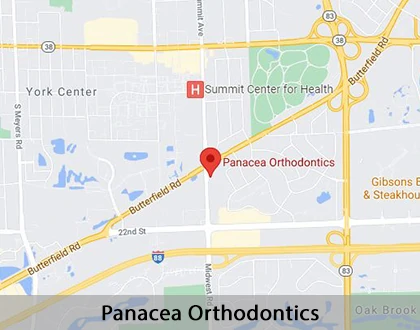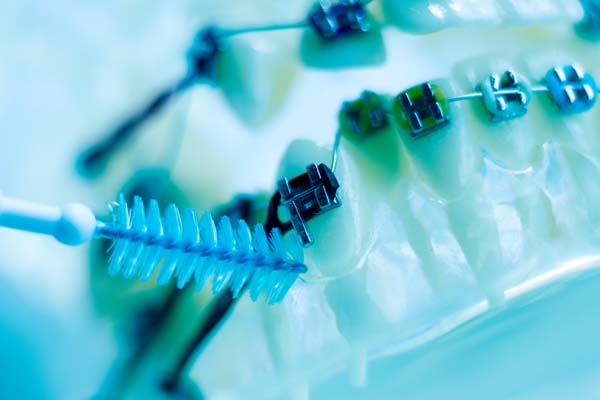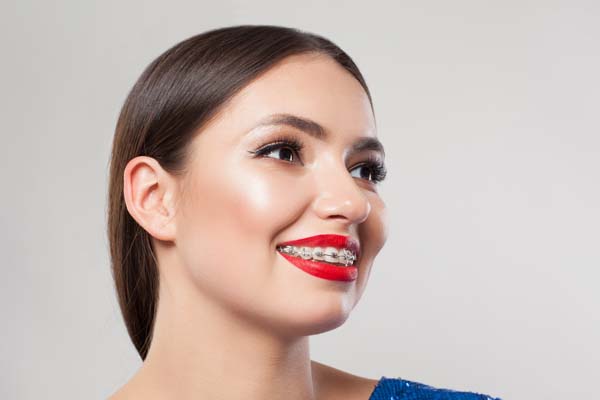Fixing BitesOak Brook, IL
Bites, the way in which the top and bottom teeth come together, are an important aspect of oral health. Fixing bites can greatly enhance oral health, function, and appearance. Malocclusions, or misaligned teeth, are quite common and appear in both primary and permanent teeth. There are several types of bite issues, each with its own set of oral health problems.
Bite-aligning treatment is available at Panacea Orthodontics in Oak Brook and the surrounding area. We specialize in correcting all types of bite issues and can help you or your child attain a straighter smile that will improve oral health and enhance physical appearance. Call us today at (630) 828-5080 to schedule an appointment or learn more about our services.
Causes of Bite Issues
Bite issues are typically inherited and found in early childhood. However, there are several conditions and lifestyle habits that can greatly affect the alignment of teeth. According to Healthline, these factors can include:
- Cleft lip and palate
- Frequent use of a pacifier after three years of age
- Prolonged use of bottle feeding and thumb sucking in early childhood
- Injuries resulting in the misalignment of the jaw
- Tumors in the mouth or jaw
- Atypically shaped or impacted teeth
- Dental care resulting in improperly fitting dental fillings, crowns, or braces
- Airway obstruction (mouth breathing), potentially caused by allergies or by enlarged adenoids or tonsils
Importance of Correcting Bite Issues
Misaligned bites can greatly affect how a person eats, speaks, and breathes. Since the upper and lower jaws do not touch, it is often difficult to chew properly. This misalignment may also cause discomfort in the jaw muscles. This, in turn, wears down the teeth due to uneven pressure distribution. Bite issues also affect speech and breathing as airflow is often blocked. Lastly, bite issues make it difficult to clean the mouth, especially between the teeth. This can cause more severe oral health problems, such as periodontal disease.
“Misaligned bites can greatly affect how a person eats, speaks, and breathes.”
Correcting Overbites
Overbites also called deep bites, occur when the top teeth protrude over the bottom teeth. The American Dental Association (ADA) finds that protruding teeth are prone to accidental breaking and are hard to close comfortably. This can lead to dried-out oral tissues followed by tooth decay. Overbites often cause headaches and jaw joint pain and can lead to TMJ disorder and gum disease.
Neutrocclusion
A neutrocclusion refers to a normal bite with other abnormalities, such as overcrowded or crooked teeth. This is the most common type of malocclusion.
Distocclusion
A distocclusion is a malocclusion in which the lower jaw is in a distal or posterior position, the backside of teeth, in relation to the upper teeth.
Mesiocclusion
Mesiocclusion is a type of malocclusion that occurs when the mandibular, or lower front teeth, occlude mesially to the normal position of the top teeth.
“Overbites often cause headaches and jaw joint pain and can lead to TMJ disorder and gum disease.”
Correcting Underbites
An underbite describes a malocclusion in which the bottom teeth overlap the top teeth. Underbites often cause eating, breathing, and speaking problems. Underbites can also cause chronic joint pain, headaches, earaches, cracked and worn teeth, tooth deterioration, bacterial infections, sleep apnea, and self-esteem problems. There are several underbite correction treatments, including:
- Braces: gradual straightening of the teeth through metal or plastic appliances (the most common way to align a bite)
- Reverse-Pull Face Mask: a headgear that wraps around a child’s head and pulls the upper jaw back into the correct position using metal bands fastened to the upper back teeth; a chin cup typically helps keep the mask in place.
- Upper Jaw Expander: a wire-frame device that fits across the palate and expands each day to gradually widen the upper jaw until the lower teeth no longer close against the outside of the uppers.
- Tooth Extraction: patients with too many lower teeth may need to extract the extra teeth. This can be a one-off procedure or done in conjunction with other methods.
- Surgery: underbites due to the jaw sticking out much further than normal may require surgery
- Cosmetic Approach: In mild cases, non-surgical cosmetic dentistry can reshape the lower teeth and then fit veneers to the uppers. Though it does not fix the underbite, it makes it less visible and sufficiently improves the jaw’s functionality.
There are two types of surgery for underbites including orthognathic jaw surgery and Le Fort III Osteotomy. Orthognathic jaw surgery is a procedure that involves moving the lower jawbone to fix a protruding jaw. The surgeon separates the bone in the jaw's rear part from the front part and then modifies it to enable the part of the jaw carrying the lower teeth to be repositioned further back.
The Le Fort III Osteotomy is a procedure performed to enhance a person's appearance and functionality when a person's face appears to have sunk above the lower jaw. The surgeon moves a person's entire face forward in this procedure.
“An underbite describes a malocclusion in which the bottom teeth overlap the top teeth.”
Check out what others are saying about our dental services on Yelp: Fixing Bites in Oak Brook, IL
Correcting Crossbites and Openbites
A crossbite is a type of malocclusion that describes when the lower teeth cover one or more upper teeth when a person bites and can occur in several places in the mouth. Crossbites can be classified as anterior and posterior. An anterior crossbite refers to the back bottom teeth covering the back top teeth, while a posterior crossbite refers to the front bottom teeth covering the front top teeth. Crossbites can be corrected through orthodontic treatment (braces or clear aligners), Rapid Palatal Expander (RPE), Reverse-Pull Headgear (Face mask), and jaw surgery.
An open bite, or overjet, refers to front upper and lower teeth that slant outward and do not touch when the mouth closes. Although openbites can be inherited, they are most often caused by behavioral influences, such as thumb and pacifier sucking, tongue thrusting when speaking, and temporomandibular joint disorder. Open bites can be corrected through altering behavior (in young children), orthodontic treatment (braces and clear aligners), and surgery.
“Although open bites can be inherited, they are most often caused by behavioral influences, such as thumb and pacifier sucking, tongue thrusting when speaking, and temporomandibular joint disorder.”
Questions Answered on This Page
Q. What are the causes of bite issues and why is it important to fix them?
Q. How can you correct an underbite?
Q. What are crossbites and open bites?
Q. How do dental professionals treat crowding and spacing issues?
People Also Ask
Q. What is early orthodontic treatment?
Crowding and Spacing Issues
Overcrowding and spacing issues refer to teeth that are unevenly distributed and are either too close together or too far apart. Although teeth naturally shift, even with orthodontic treatment, there are non-genetic causes for overcrowding, such as early loss of primary teeth and non-erupting permanent teeth. When primary teeth do not come out when they are supposed to, permanent teeth often come in and cause crowding. Likewise, permanent teeth may not erupt properly due to retained primary teeth.
Crowding and spacing issues are most commonly treated through braces or clear aligners as they guide the teeth into proper placement. Other treatment options include veneers and dentofacial orthopedics, including headgears and palatal expanders. Dentofacial orthopedics help guide facial bone growth to properly align the teeth.
“Overcrowding and spacing issues refer to teeth that are unevenly distributed and are either too close together or too far apart.”
Frequently Asked Questions About Fixing Bites
Q. What is the most common bite problem?
A. The most common malocclusion is overcrowding. This can be the result of an overbite, overjet, or underbite. In some cases, overcrowding may be the sole reason for an uneven bite. With treatment, many patients experience an aligned bite just by spacing out the teeth.
Q. Who specializes in treating bite issues?
A. Orthodontists are dental professionals who specialize in the treatment of teeth and bite misalignment. In some cases, a dentist may offer orthodontic services as they are trained to treat all types of dental problems. Oral and maxillofacial surgeons can also perform procedures that help correct misaligned bites.
Q. How do I know if I have a bite issue?
A. The most obvious bite issues are often physical and can be seen as an overbite, underbite, or crossbite. However, minor bite issues may not be noticeable and many patients do not experience any symptoms. A bite issue refers to any bite in which the top and bottom jaws do not evenly align. It is important to ask your dentist about your bite to ensure your oral health remains in line.
Q. Should all teeth touch when the mouth is closed?
A. A correctly-aligned bite occurs when the top and bottom back teeth touch when the mouth is closed. The upper front teeth should fall in front of the lower teeth and should overlap them by about 2 mm. Any more than 2 mm would be considered an overbite.
Q. What environmental influences cause bite issues?
A. Many environmental factors have changed the way our mouths, teeth, and jaws grow. These external factors include bottle-feeding, thumb and pacifier sucking, softer diets in babies and children, breathing abnormalities, allergies, and poor nutrition. Bite issues may also result from injury and trauma.
Start Feeling Better – Visit Us Today
By visiting us as soon as possible, our team can help get you the professional treatment you need. Instead of waiting around and allowing the symptoms to get worse, we can provide you with treatment options.
Definition of Dental Terminology
Call Us Today
Fixing all types of bites is our specialty. If you are unhappy with the way your teeth line up or a misaligned bite is causing you problems, we can help. Call us today at 630-828-5080 to schedule an appointment or learn more about our services.
Helpful Related Links
- American Dental Association (ADA). Glossary of Dental Terms. 2021
About our business, license, and website security
- Panacea Orthodontics was established in 2019.
- We accept the following payment methods: American Express, Cash, Check, Discover, MasterCard, and Visa
- We serve patients from the following counties: DuPage County and Cook County
- We serve patients from the following cities: Oak Brook, Wheaton, Lombard, Elmhurst, Downers Grove, Berwyn, West Chester, Villa Park, Clarendon Hills, Hinsdale and Oak Brook Terrace
- National Provider Identifier Database (1316375926). View NPI Registry Information
- Norton Safe Web. View Details
- Trend Micro Site Safety Center. View Details
Back to top of Fixing Bites







